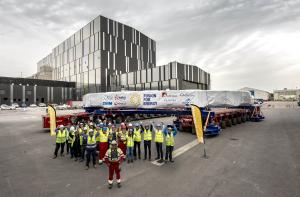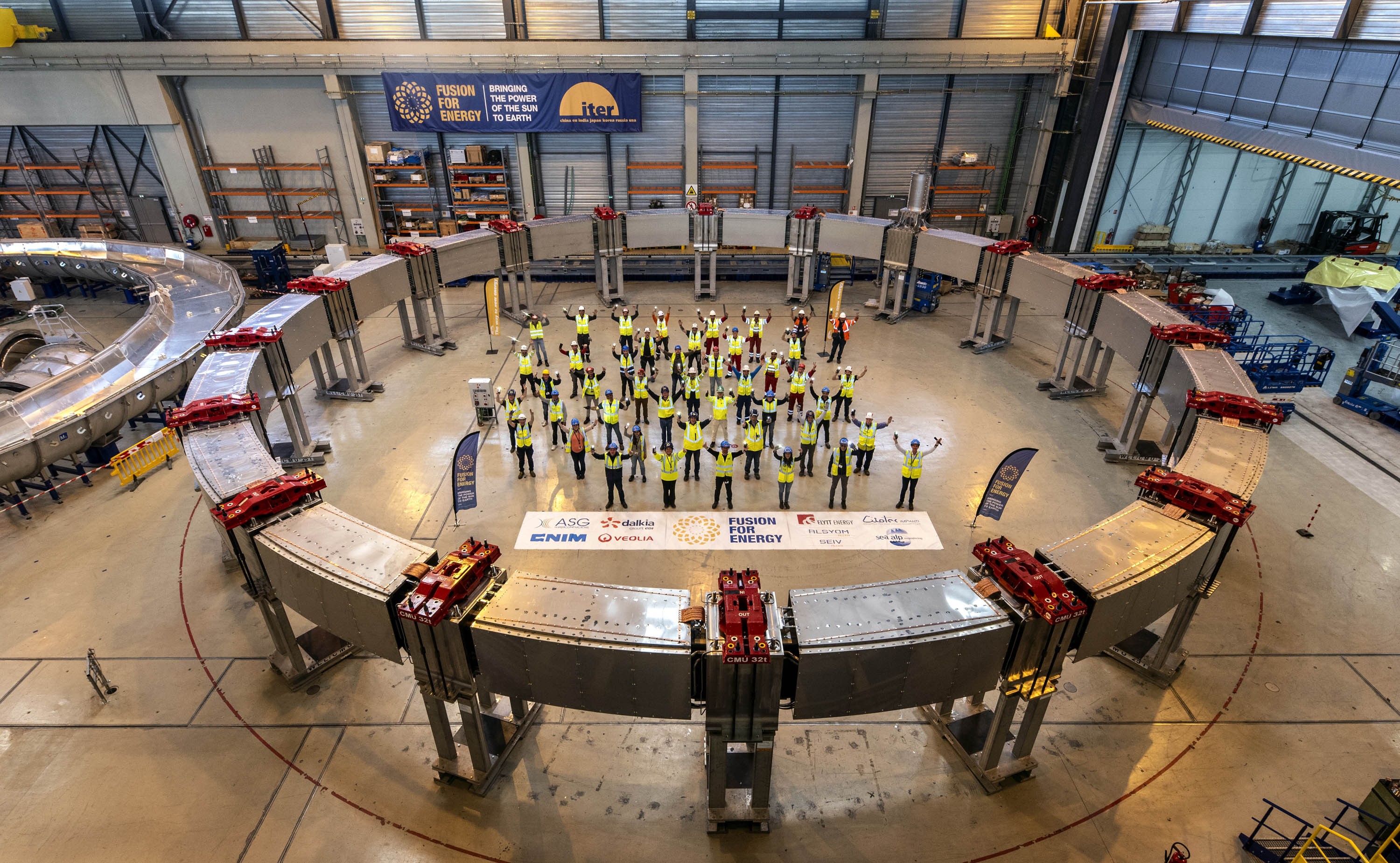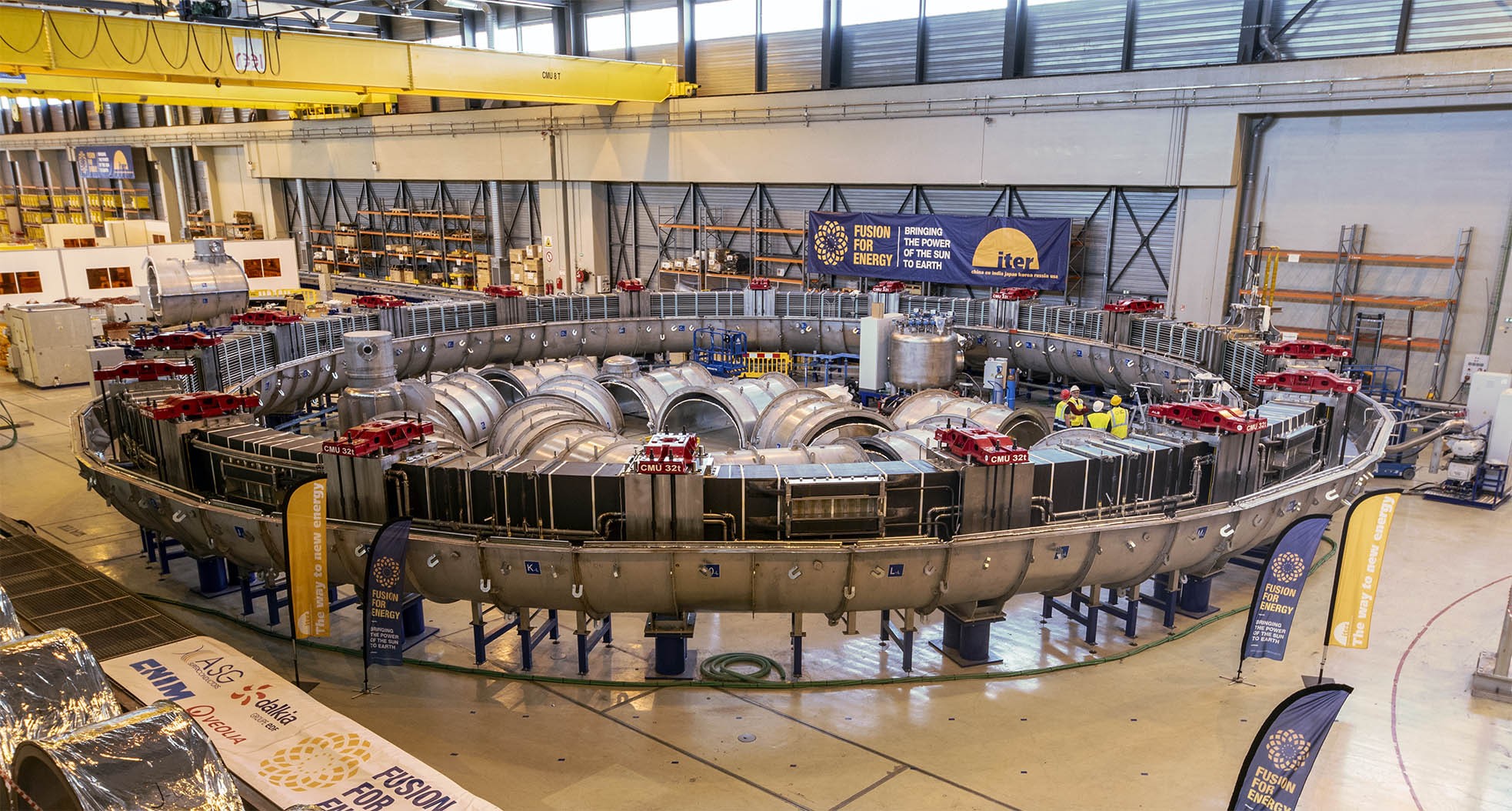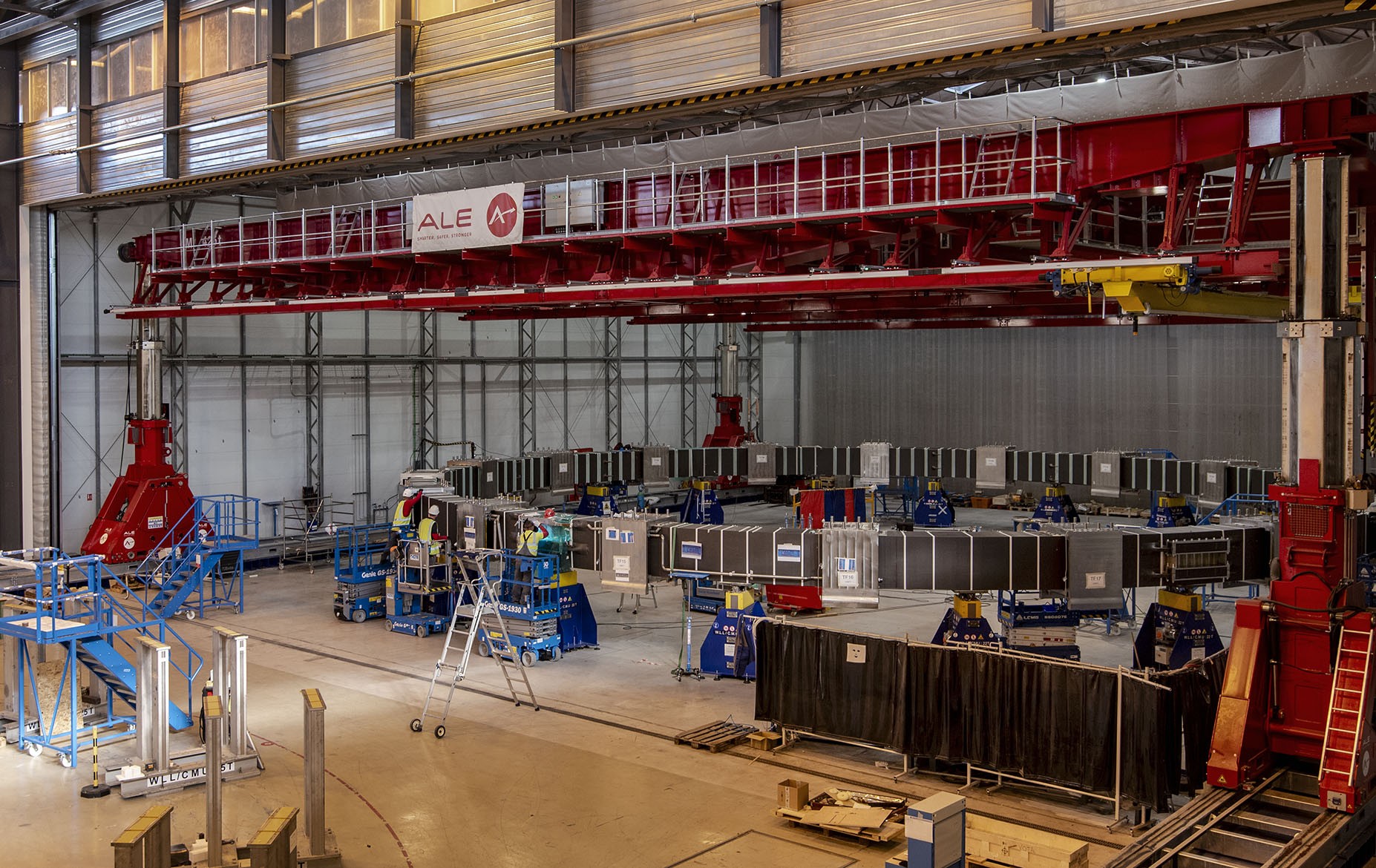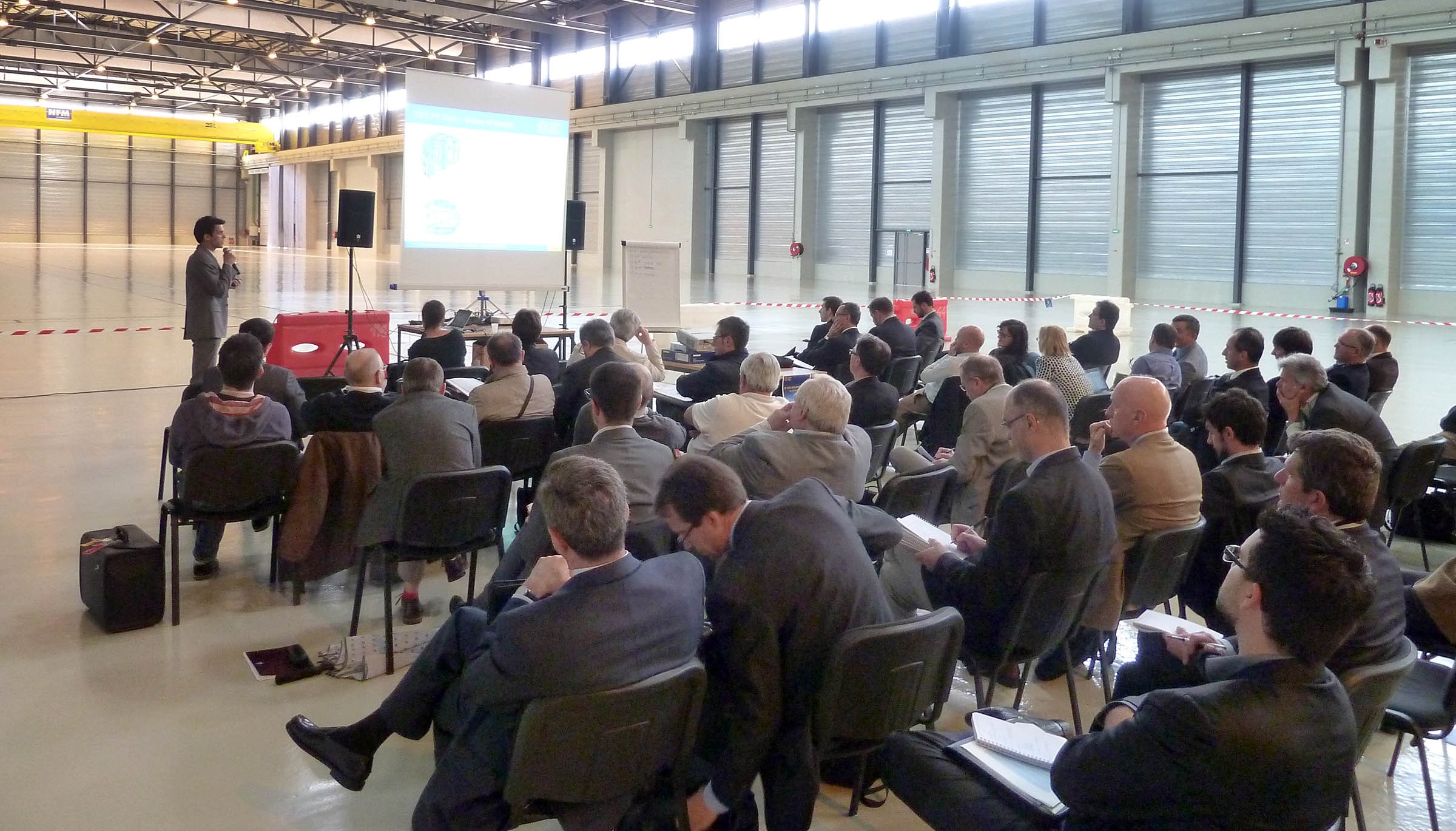La boucle est bouclée
Alors que l'imposante bobine annulaire progressait avec lenteur de l'installation de bobinage des aimants de champ poloïdal, où elle a été fabriquée, vers la zone de stockage, où elle demeurera jusqu'à son transfert vers le puits d'assemblage du tokamak, Pierre Gavouyère-Lasserre s'est remémoré un moment décisif vécu 10 ans auparavant, en avril 2014. L'agence domestique européenne Fusion for Energy, chargée de fournir les cinq plus gros aimants supraconducteurs annulaires, avait organisé des « journées d'information sur les bobines de champ poloïdal » dans la vaste installation de bobinage du site ITER, alors inoccupée. Pierre Gavouyère-Lasserre, qui est actuellement chef de projet adjoint en charge des bobines de champ poloïdal chez Fusion for Energy, avait participé à la présentation des futurs appels d'offres devant plusieurs dizaines de représentants de l'industrie européenne qui se portaient candidats pour relever le défi. Cette semaine, il a assisté avec émotion à l'aboutissement de la formidable aventure industrielle lancée dix années plus tôt : la bobine de champ poloïdal 3 (PF3), dernière de la série produite pour la machine ITER, a été entreposée aux côtés de sa quasi-jumelle, la PF4, et de la bobine PF2, aux dimensions plus modestes.
La production de la bobine PF3, l'une des deux plus grosses bobines annulaires avec ses 24 mètres de diamètre, est le fruit de l'expertise technique et organisationnelle cumulée depuis le début des travaux de fabrication dans l'installation de bobinage, fin mars 2017. La PF5, première bobine à sortir de la chaîne de production en 2021, avait nécessité trois ans et demi de travail. Bien que plus volumineuse (+40%) et bobinée avec une plus grande longueur de câble supraconducteur (+22%), la bobine PF3 a été achevée en deux ans et 9 mois, soit un gain de temps de fabrication de 15 mois.
Malgré son caractère spectaculaire, l'opération de mardi est devenue presque banale sur le chantier ITER : trois remorques modulaires autopropulsées (SPMT), chacune équipée d'un moteur de 180 kW, ont travaillé de manière parfaitement coordonnée pour transférer la bobine de 375 tonnes, soigneusement emballée dans une bâche de protection, vers le bâtiment de stockage. Le trajet de l'installation de bobinage vers la zone de stockage a duré moins de 45 minutes, y compris la traditionnelle séance photo qui a immortalisé cet événement et la grande aventure humaine et technologique qu'il représentait.
Ce fut un moment de fierté légitime pour toutes les équipes présentes ce jour-là, qu'elles fassent partie d'ITER Organization, de Fusion for Energy ou de la demi-douzaine d'entreprises sous-traitantes dont le nom figurait sur la bâche de protection de la bobine. Rares sont les projets industriels capables de rivaliser avec la fabrication, en un temps record, d'éléments uniques en leur genre d'une taille et d'une complexité aussi exceptionnelles.
Découvrez le reportage complet sur le site web de Fusion for Energy.

